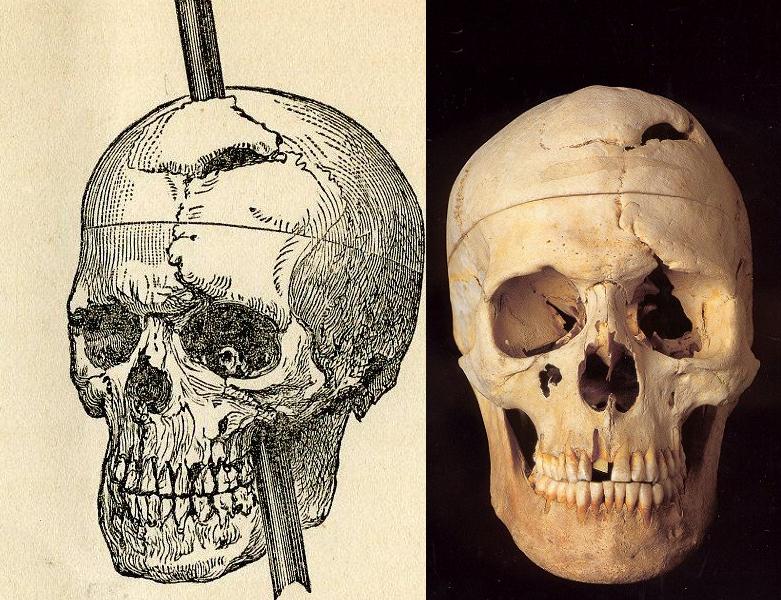Merry Monday!
It’s no secret that JustHeath likes both psychology and biology—heck, he even majored in both of ‘em. Whereas psychology can been conceptualized as the study of human behavior, biology can be understood as the infrastructure of said behavior. Today, I’m going to tell readers a little bit about the curious case of Phineas Gage whose story takes place in the intersection of the these two disciplines.
In 1848, a young railroad foreman by the name of Phineas Gage was having a seemingly routine day working with blasting powder (Carlson, 2004; Fox, 2004). Something went awry, and the steel rod of a little more than three and a half feet in length was propelled into Gage’s head through his cheek. You can view a diagram and a picture of his actual preserved skull in today’s feature image.
Remarkably, Gage not only survived, but he was able to equine his way to a physician and suffered no detectable motor or sensory problems (Carlson, 2004; Fox, 2004). However, people who knew him well started to observe what appeared to be personality and behavioral changes. Before the accident, Gage was reported to have been respectable and responsible, but afterwards he perorated profanity and acted on the slightest whim. A post mortem discovered Gage’s orbitofrontal cortex had been damaged by the rod, and this area of the brain is connected to emotional behavior and personality.
The curious case of Phineas Gage is one of the most discussed in introductory psychology courses due to its brain-behavior bond. However, I’d be remiss if I didn’t mention that there has been some relatively recent controversy about the case. For example, Macmillan and Lena (2010) contended that Gage’s personality change could have been psychosocial in origin as a response to the trauma of the accident. There’s also some historical evidence that Gage traveled quite a bit after the incident and held various other jobs, and this account seems to contradict the Jekyll-Hyde transformation that many textbooks eulogize.
If any readers are interested in more in depth study of the case, then direct your web browsers to The Phineas Gage Information Page. Until next time, stay psyched up!
References
Carlson, N. R. (2004). Physiology of behavior (8th ed.). Boston: Pearson.
Fox, S. I. (2004). Human physiology (8th ed.). Boston: McGraw-Hill.
Macmillan, M., & Lena, M. L. (2010). Rehabilitating Phineas Gage. Neuropsychological Rehabilitation, 20, 641-658. doi:10.1080/09602011003760527

Oh, I forgot to mention that philosophically speaking, this event was very important to psychologists. It was a big milestone in the Lockean/realist view that eventually led the way for a structuralist mindset. Later on, the behaviorists took these ideas and ran with them to a greater extreme.
Yes – this is becoming a pretty standard case in intro to philosophy courses when discussing mind/brain identity cases. I’m interested in the recent controversy, as I hadn’t heard those objections before – though they do make some sense!
Ah, well, I’ve attached one article I have on the subject. The other I’ve requested through ILL.